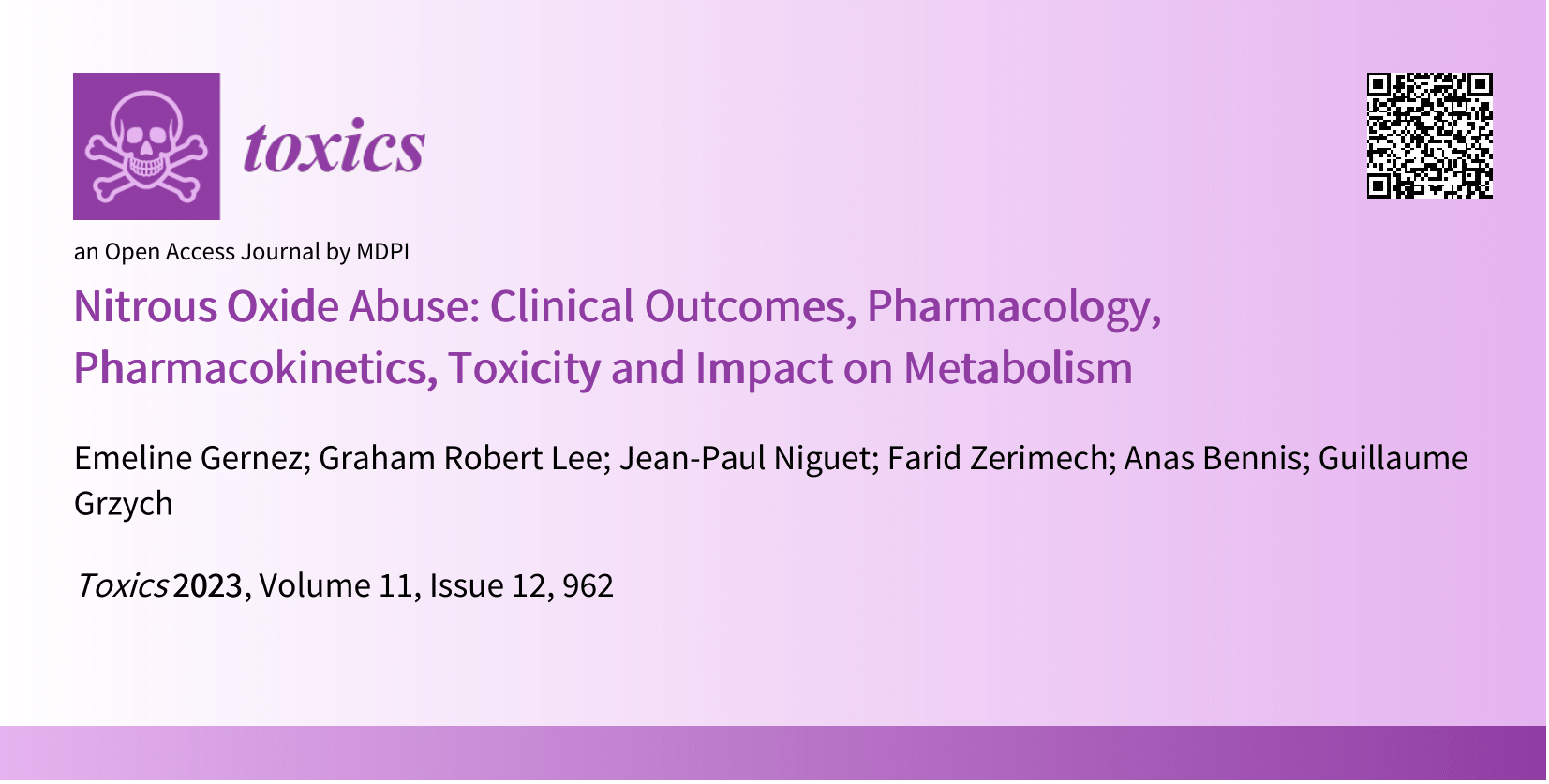Guillaume Grzych 1, Sylvie Deheul 2, Jean-Baptiste Davion 3, Fanny Lemonnier 1, Dries Dobbelaere 4, Louise Carton 5, Isabelle Kim 1, Jean Claude Guichard 6, Marie Girot 3, Linda Humbert 7, Audrey Joly 8, Claire Douillard 7, Céline Tard 3
Annales de biologie clinique, Volume 80, Issue 3, May-June 2022
Nitrous oxide (N2O), also known as "laughing gas" or "proto", was originally used in the medical field for its analgesic action, and in industry as a propellant or oxidizer. However, its use has been diverted to recreational purposes via inhalation in the form of cartridges or cylinders. Since 2018, there has been an increase in this use, particularly among the
18-25 year-olds (ANSES report 2019). The Hauts-de-France and Île-de-France regions are the most affected. Whereas this consumption used to be observed more in party environments, today many cases of repeated or even daily use are being reported, among some young people over the long term and in large quantities. Despite a change
legislation in 2021 prohibiting sales to minors, consumption among young people does not seem to be decreasing, due to easy access via online sales and the development of resale channels on social networks. In fact, this gas is sold over the counter, particularly on the Internet (amazon.fr or https://partygas24.nl).
It is "discreet" (no odor, no characteristic physical effects), its action is rapid and users consider its effects benign. However, there is a real toxicity associated with chronic use of N2O, leading to neurological disorders including combined sclerosis of the spinal cord [3]. We frequently observe patients with gait disorders or paresthesias, with a more or less self-limiting course.
and may even lead to disabling motor disability. Some reports have also described the appearance of psychological disorders linked to N2O consumption. Serum or urine N2O assays are not routinely carried out, as they are unable to ascertain actual exposure due to the very short half-life of this gas in the body.
in the body. Given the increase in hospital admissions for disorders related to chronic N2O consumption, it is necessary to turn to other biological markers, and in particular certain metabolic markers.
Link to article: https: //www.jle.com/fr/revues/abc/e-docs/marqueurs_biologiques_et_impact_metabolique_de_la_consommation_chronique_de_protoxyde_dazote_322646/article.phtml










 Make a donation
Make a donation